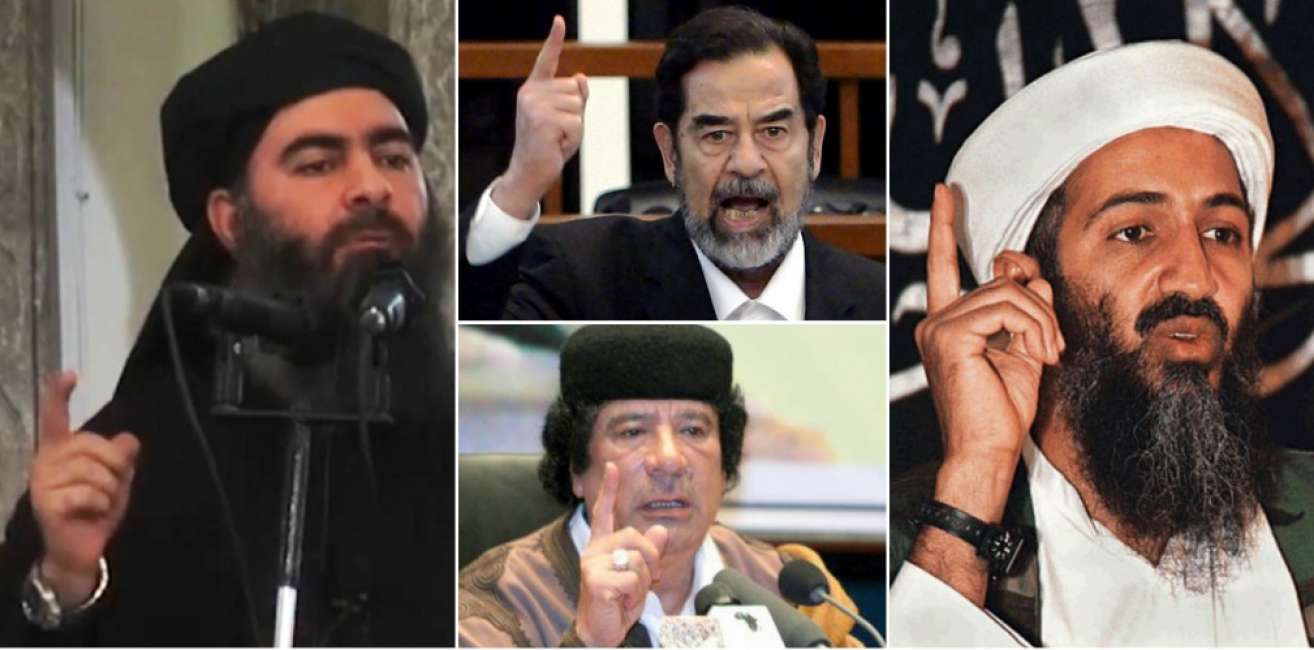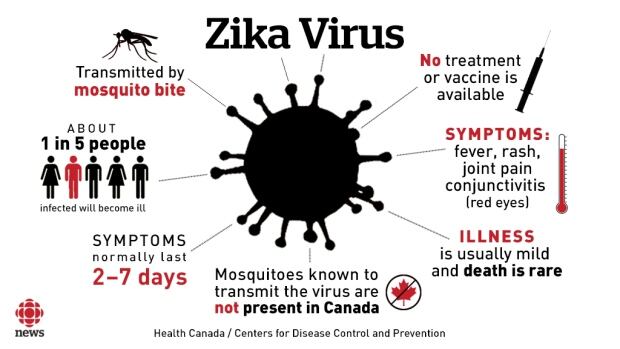
Posts by AnnaCorsaro:
ISIS: Turning the Corner or Turning Around?
November 28th, 2016By Anna Corsaro.
In these days, as Iraqi forces backed up by the US-led coalition are trying to break the last stand of ISIS resistance in the battle for Mosul, the world will witness the laying of a milestone in the war against the cancerous terrorist state, which broke out across the lands of Iraq and Syria, to rapidly metastasize its cells worldwide.
However, as much as it would be tempting to abandon oneself to the enthusiasm following the achievement of such a major breakthrough, a more collected look at the situation reveals where we actually are in this struggle against one of the most brutal regimes in history.
Divided We Fall
While banishing ISIS from Iraq is, at least on the surface, a big leap forward in the fight, the way that will come to be accomplished and the price payed for that accomplishment may tell us a different story. Also, the direction of future developments can be assessed from there.
For instance, the latest advancements in the fight against ISIS have come after the western air strikes were allegedly intensified. The reason for said intensification, though, was essentially as a reaction after the involvement of the Russians, who started their own air campaign on Syrian territories. There is no denying, indeed, that air attacks from western forces in the period preceding the Russian intervention were either scarce, or often directed in Syria against Syrian elements loyal to President Bashar Al-Assad, rather than ISIS troops. That is one of the reasons why ISIS gained control of vast territories in Iraq to begin with, where the opposition was essentially left for way too long solely in the hands of under-equipped local paramilitary groups and the Iraqi armed forces.
Even if there is more western involvement now, the divide with the Russian Federation has not been bridged yet, especially over the whole Syrian situation.
Indeed, Syria is the elephant in the room in this intricate military and diplomatic muddle. Arguably, it has been all along. When I mentioned the price to drive ISIS out of Mosul, I was hinting at the fact that progress has been made so fast – the beginning of the operation was announced on October 17 by Iraqi Prime Minister Haider Abadi – not only because western air strikes were intensified, but because they were intensified, but left a passage from Iraq into Syrian territories.
No longer than a month ago, ISIS leaders were reported fleeing Mosul heading to Raqqa in Syria, with their families. This circumstance was confirmed by both Maj Gen Gary Volesky of the U.S. Army, who added that essentially it is the foreign fighters who are being left behind in a last-ditch attempt at keeping control over the caliphate’s stronghold. What is problematic is the legitimate suspicion that the fleeing troops were intentionally left a corridor leading to Raqqa. The Al-Hashd Al-Sha’abi (People’s Mobilization Forces – PMF) made open allegations that air strikes did not target ISIS convoys leaving Mosul. This is worrisome because, on one hand it can be argued that a step forward is being made in Iraq at the cost of taking one back in Syria, but also because in the past allied forces – especially Turkish ones – attacked Syrian objectives on multiple occasions.
This could lead to an escalation that would involve the United States and Russia, which has always been a concern during this crisis. Now that the American administration is about to change, there is a chance that things may ameliorate on that front, but it is quite too early to assess if elected President Trump will follow through with his program of relaxing relations with the Russian Federation.

Hide and Seek with the Serpent
Keeping an on the Syrian scenario, there is then to consider the big question on the whereabouts of Abu Bakr Al Baghdadi and his capture, or more likely elimination. Very much like with the late Osama bin Laden, when the West undertakes a so-called war on terror, it often tends to be too late when it finally manages to cut the head of the serpent. That assuming the serpent has not already turned into a hydra, as the alarmingly raising number of deadly terrorist attacks in Europe and America would suggest, instead. The problem is that as long as Al Baghdadi lives, and as long as he is able to find shelter on Syrian territories, forces loyal to Syrian President Bashar Al Assad will likely be open season for air strikes “targeting ISIS elements.”
Current information concerning the location of the self-proclaimed Caliph is all but confused, to say the least. There is no agreement in either earlier and later reports on his coordinates. As of late, when he is not reported escaping air strikes as usual, he is believed to be “probably” hiding in tunnels under Mosul and carrying a suicide bomb vest nonetheless.
However, let’s keep in mind that most of the ISIS establishment allegedly left the area early on during the launch of the Mosul offensive. These two occurrences, when examined together, do appear contradictory, since it is hard to make sense of a paranoid personality as Al Baghdadi’s not being at odds with the notion of lingering around a besieged city, while his commanders are leaving the danger zone relatively undisturbed.
Of course, no scenario can be ruled out completely, when assessing the situation based on incomplete information. However, if history teaches us anything, the Al Baghdadis of the world share a nonchalant propensity for sending other to being slaughtered, all the while displaying a fierce aversion for finding themselves in even the least physical danger, and thus adopting every possible countermeasure to avoid this inconvenience. This leads me to believe that information alleging that he is still in Mosul is probably contaminated, either on ISIS side to misdirect hostile researches, or even on Iraqi and U.S. side, to instill false confidence in the enemy and enticing a misstep by Al Baghdadi.
Whether or not that is the case, we are likely to find out in a few weeks. However, as someone who follows the evolution of the conflict very closely, I am not holding my breath expecting both Mosul and soon to be respectively the place and time for the chief of ISIS to finally meet his demise. To mention again historical precedents, prominent terrorist leaders such as Al-Baghdadi seem amazingly successful at this hide and seek game. It is impossible to forget how Usama Bin Laden evaded – admittedly with surprising effectiveness – the best efforts of the intelligence services of half the world at locating him for more than a decade.
Then, conveniently, he was found living the good life very quietly in the backyard of the Taliban’s home turf. Bizarrely, attempts at staying into hiding by disgraced political figures such as Saddam Hussein or Muammar Gaddafi are typically short-lived, instead. Possibly, that could be attributed to the fact that, by delaying the capture or assassination of an enemy leader, other geopolitical goals against other enemies can be pursued and justified on the side, often through proxy war. Or maybe, the hiding success Al Baghdadi, Bin Laden et al. enjoyed is due to the superior skills they acquired during the time they were trained by western military consultants, before turning to the dark side.
But now I am digressing.
Turning the Corner or Turning Around?
As the battle for Mosul is approaching its crucial hour, the question we are left with is: are we turning the corner in the fight against ISIS or are we turning around after all is said and done?
In other words, is this a sign of finally a serious commitment from the western world to really put an end to the horrific reign of terror of the Islamic State, which was generated and thrived also due the instability the West itself created in the area? Or is this effort all a facade to continue pursuing power politics in the region, namely by trying to undermine the Presidency of Bashar Al Assad?
These are not trivial problems. During the administration of the exiting U.S. President, I would have assumed the answer was gonna be the latter. After the result of the recent elections, I am tentatively inclined it might be the former. However, very similarly to the above question, also the toughest test for a newly elected president has always been whether to turn the corner on his predecessor or to turn around on his election promise.
For more on Anna Corsaro please visit.
http://russiancouncil.ru/en/blogs/anna-corsaro/
Comments Off on ISIS: Turning the Corner or Turning Around?
Zika a Small Big Enemy
March 22nd, 2016By Anna Corsaro.
“There is nothing so patient, in this world or any other, as a virus searching for a host.”
― Mira Grant, Countdown
Zika is the name, again another mosquito-carried disease that threatens our health. Another little dangerous enemy, one that has been being talked about a lot all around the world only since February 2016. Opinions of scientists from various countries are conflicting on this insect and the infection it carries, as it always happens when it comes to sudden outbreaks.
Since it can’t be pretended that this isn’t happening at this point, I decide to gather information and to form an a clearer picture of the situation, trying to remain pragmatic as always. President Obama asked the Congress to grant $1.8 billion in emergency funding to fight Zika. We have to observe that until recently Zika had remained confined in a few countries, so no one outside worried about spending money to investigate its threat potential or to find a cure.
Who’s Zika?
We might describe it as the younger cousin of the more infamous Dengue, Chikungunya and Malaria since it spreads in areas where theAedes mosquito is present. In 1947 it was discovered accidentally, as it often happens, while some scientists were studying the yellow fever.
Its name comes from the Zika Forest, which translates as “overgrown”. This forest is a beautiful natural reserve on Lake Victoria near Entebbe and not far from Uganda’s capital, Kampala. That’s where the first infected rhesus monkeys were found. Main species that carry infection are the primates, large mammals (hippos, impala, elephants, goats, sheep, alcefali, lions, wildebeests, zebras), and rodents.
Over the years, the virus crossed over to humans to and started spreading. The first known outbreak of Zika virus outside of Africa took place in the island of Yap in Micronesia in 2007, but it also caused outbreaks in Sierra Leon, Senegal, the Philippines, Thailand and Indonesia, up to the most severe forms in Brazil with 1.5 million estimated cases in 2015.
Presently, though, it appears that it is back on its way to reach a global scale spreading thanks to the travelers returning from infected areas.
What to Expect if You Get Zika?
Actually in most cases, about 75%, the disease goes either unnoticed or misidentified. The symptoms resemble a mild case of the flu with headaches, muscle and joint pain and mild fever, plus a rash. They can last anywhere from two to seven days and it is estimated that as few as only 1 person out of 4 displays them. It’s evident that, since these symptoms have so little specificity and could be found in other infections, the actual diagnosis of the disease is not always easy.
IN RARE OCCASIONS ZIKA CAUSES VERY SERIOUS PROBLEMS |
Neurological Effects
According to a warning issued by the World Health Organization (WHO) a neurological disorder associated with temporary paralysis is spreading in those Latin American where a current outbreak of Zika is taking place.
This warning stems from the findings of researchers working on outbreaks in different countries, who diagnosed a serious condition known as Guillain-Barré syndrome in a number of Zika patients. What’s most notable is that this is a rare autoimmune inflammatory disease of the peripheral nervous system with potentially lethal effects in the most serious cases. It causes muscle weakness starting from the legs and it can result in paralysis.
So far, cases of this syndrome in Zika-affected areas have been reported from Brazil, Colombia, El Salvador, French Polynesia, Suriname and Venezuela. For example, in Venezuela alone about 250 occurrences of the disease were discovered. In Brazil, in the state of Bahia, the number of cases reported in 2015 increased by 19% compared to the previous year, according to WHO sources.
Sexual Transmission
“Now that we know Zika virus can be transmitted through sex, this increases our awareness campaign on educating the public about protecting themselves and others.”
― Zachary Thompson, DCHHS director.
In early February in Texas it was discovered…
Comments Off on Zika a Small Big Enemy
The Russian Case 50 Years After the Cuban Crisis
July 4th, 2015
By Anna Corsaro.
It was 1962 and the world had been dragged to the verge of disaster, where it remained, precariously-balanced, for thirteen – seemingly never-ending – days. Fast forwarding to half a century later, it is 2015 and it is impossible not to notice how the hard-learned lesson of the Cuban Missile Crisis appears to have been forgotten. Although the current “Cold War II” hasn’t reached the same dangerous peaks of its former incarnation, I maintain that it shows all the signs of a conflict escalating so rapidly, that a revival of the Cuban Crisis in a European setting is not at all far-fetched. Not only that, but this scenario may become reality in the near future, especially given the latest developments in the relations between the West and Russia.
While the spark that lit the fire in Cuba had been shot by the USSR’s attempt to install nuclear missiles right in front of the coast of the USA, this time around the roles are reversed. Indeed, although in international relations there are hardly ever any instances where both parties involved don’t share at least a small portion of the responsibility for a crisis – and arguably that also applies to the case at hand – the United States and their allies are the ones who firmly tip the scale in the escalation of the present situation.
The news that the USA are going to place their troops at 200 km from the Russian border – a measure which is totally unprecedented – is a strong indication that diplomatic solutions are not being effectively sought, at least not without throwing into the mix a good deal of forcing of the opponent’s hand.
The details of this decision reveal the degree of determination of the USA and the NATO. During a joint conference in Tallin with the defense ministers of the Baltic States a few days ago, U.S. Defense Secretary Ash Carter declared “We’ll temporarily deploy vehicles of an armored brigade and its equipment in the countries of Central and Eastern Europe.”
According to documents released in the same occasions the contingent that will be deployed includes 250 tanks, Bradley infantry fighting vehicles and self-propelled howitzers.
Carter stated that this is part of a strategy of “European pre-positioning .” Baltic states and other former Eastern Bloc countries have agreed to the military presence, that allegedly “will be moved for training and exercises.”
As observed by American historian Stephen Cohen of Princeton University, this is the first time in history that the United States have deployed their heavy weapons and troops so close to the line of defense of Russia.
The similarities with the Cuban Missile Crisis are striking, with one faction putting their military machine in the backyard of other one. The justification for this move is the alleged role of the Russian Federation in the Ukrainian crisis.
But the dissimilarities are interesting as well, if not more. It is worth noting that what eventually defused the Cuban Crisis was the fact that the American political leaders kept working for a peaceful solution, despite the fact that the military oligarchies of the period were supporting a more heavy-handed approach. As the situation stands now, Western leaders seem to accept the idea of escalating the conflict.
Indeed, not long before the deployment of troops in the Baltic countries was announced, Obama had affirmed at the G7 meeting in Kruen,Germany, that “We need to keep pushing Russia.” He also added “Russian forces continue to operate in eastern Ukraine, violating Ukraine’s sovereignty and territorial integrity.” And to conclude “The G7 is making it clear that if necessary we stand ready to impose additional significant sanctions against Russia.”
Obama’s sentiments were quickly mirrored by the other members of the G7 which jointly declared that they would implement “further restrictive measures in order to increase cost on Russia.” It goes without saying that also all comments originating from the EU institution are in line with this view.

The United States, and by association the NATO bloc, had a good case at the time to run to the fence, as it was intolerable to have a loaded gun pointed directly at their head in an area of vital interest. But, this also highlights the crucial problem with their current strategy concerning the whole Ukrainian affair, which makes their case a lot weaker than it was concerning the Cuban affair, considering that the main accusation against Russia isn’t backed up by robust evidence.
This is not to support the view that Russia isn’t involved in any activity correlated with Ukrainian affairs, quite the contrary. After all, it would be inconceivable that they would disregard the events in an important area of interests, just as the USA have never been shy to do. But this is where the problem lies. While the extent of NATO’s actions – or at least the tip of the iceberg – is under the world’s eyes, since the troops they are going to dislocate at the doorstep of Russia are very real, their accusations against Moscow do not stand up to scrutiny.
We are reminded constantly by political leaders on the media that Russian tanks and troops have invaded the Donbass, but as of now we have only their word to back it up. The same word they gave to prove that Saddam Hussein was secretly accumulating mass destruction weapons, save dismissing the whole story a few years later with the bottom line that “well, we were wrong, but we were still right to attack.” The same argument could be brought up regarding the “evidence” of Assad’s chemical attacks against civilians, and the list goes on.
But back to Ukraine, in an age when spy satellites are capable of reading a car plate there is no justification for NATO not having shown a single photo of even just one Russian military vehicle on Ukrainian territory. Instead the only alleged proof of the invasion appears from less official sources, like resourceful investigative journalist Eliot Higgins – who also cooperates with the Atlantic Council – who tries to substantiate the Russian military presence in Ukraine through the photos posted on social media by Russian troops allegedly deployed in the area. I have nothing but praise to express for the work of Mr. Higgins, but I wouldn’t risk a nuclear escalation on a selfie.
Therefore, if it is true that in diplomacy truth is certainly an elastic concept, when it comes to justify military action the West has a proven track record of stretching that truth beyond its breaking point, and the defense of human rights has historically been a favorite among all pretexts. Certainly others too have had the same fault in the past, but that can’t be an excuse. Let’s not forget that, after all, the URSS deployed warheads in Cuba as a retaliation for the embarrassing failure of the Bay of Pigs Invasion.
So, in hindsight, even if the Soviet reaction was certainly short-sighted, on the same token it wasn’t completely devoid of some kind of underlying logic, even though they take all the blame in western official history. This also goes to show that demonizing the adversary remains the oldest trick in the book to publicly justify any action aimed at acquiring geopolitical supremacy.
With that in mind, there is one question that needs to be asked. Is supremacy worth annihilation? Because that was the path the world was on during those days in Cuba, and that’s the path it is considering walking down now. Back in 1962, neither of the parties gained supremacy over the other by playing this dangerous game, but they managed to avoid annihilation. If the lesson was learned hopefully they will be able to the same in 2015.
Posted on: http://russiancouncil.ru/en/blogs/anna-corsaro/?id_4=1924
Comments Off on The Russian Case 50 Years After the Cuban Crisis






